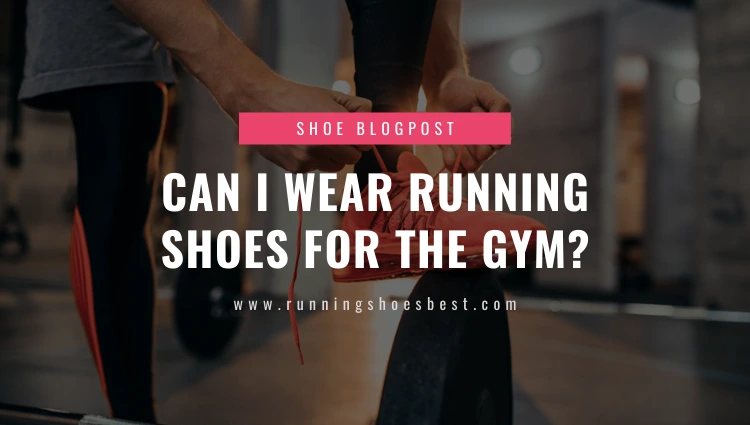Many people assume that running shoes are made for running, but they’re actually meant for running on trails rather than running on roads.
Running shoes are designed with features best suited for running trails. Very specific design elements make them optimal trail running shoes, and seeing as they were never intended for use in a gym setting, it’s not a good idea to wear your running shoes to the gym!
What kinds of activities go on at the gym?

There are many different types of activities that go on at the gym, running isn’t the only thing happening! Gym-goers may also partake in weightlifting, Zumba or another type of dance fitness class, step classes (stair stepper), intervals (elliptical), running in place (treadmill) and more. All these activities require specialized shoes to avoid injury.
What kind of shoes should I use at the gym?
If running isn’t your only activity at the gym, it’s important to get footwear that will serve you well in all areas of the gym. There are shoes made specifically for both running and cross-training (gym class) activities.
Running shoes typically have a thicker and more cushioned sole than other types of shoes because running trails requires extra shock absorption for runner’s body;
while running on roads, there is less shock absorption needed due to running on harder surfaces such as asphalt or concrete.
There are also many different styles of running sneakers available like zero drop, minimalist running shoes and maximalist running shoes.
When choosing a shoe for workouts other than running (at the gym), make sure the soles provide cushioning while still allowing you to feel the ground, and that it doesn’t have too much of a heel to toe drop.
Running shoes typically have 12 mm or more while cross-training shoes usually have 4-8 mm. A 0 drop running shoe has no difference between heel to toe where as other running shoes can be 10mm+ which would put stress on your ankles.
You don’t want to wear running sneakers for other types of exercises like weightlifting; otherwise, you risk injury due to poor support and excessive cushioning (good for running but not ideal for weightlifting). Weightlifting specifically requires supportive soles with little or no cushioning;
Some running shoes have extra support for your arch while others do not;
some running shoes are designed with flat soles while others come with up to a 6mm drop .
Shoes with no arch support and minimal cushioning are perfect for running on roads or trails because they allow you to feel the ground, preventing injury.
If running isn’t your only activity at the gym, try to get running sneakers with flat soles so there is no arch support. This way you can wear them for running in place or on the treadmill without feeling too much of a difference between running on pavement or running on the treadmill.
If you are looking for shoes that are ideal for running in place, elliptical training and sprinting, look for running shoes with little cushioning (or zero drop) and a straight outsole .
The more cushioning usually means that it does not have an arch support , while some cross-training shoes do have arch support but they also have flat soles or very low heel to toe drop . Training shoes will allow you to run or sprint on running machines without feeling a difference from running outside.
Running shoes that have arch support and a thick sole are not ideal for running in place because they will make running on the treadmill feel more difficult.
As a general rule of thumb, avoid running shoes at the gym and stick with running-inspired cross training shoes instead.
Do not wear running shoes to the gym!
If you want to use your running footwear for doing other activities at the gym, try getting running-endorsed cross trainers that have a very low heel to toe drop for easy transitioning from road running to treadmill running. These will give you everything you love about your running kicks but also offer the benefits of wearing footgear meant for all types of workouts! Happy Trails!
What can happen if you wear running shoes at the gym?

There are several injuries that can result from wearing your running sneakers to the gym. One of those is iliotibial band syndrome.
The iliotibial band is a ligament that runs along the outside of your knee from the hip to the shin bone. The band can get very tight, which makes running — or walking briskly around in running shoes — extremely uncomfortable!
Iliotibial band syndrome is an overuse injury that also happens when running on roads.
Another injury caused by running shoes at the gym is plantar fasciitis. The soles of running shoes are flat because running trails are either flat or downhill, therefore not requiring support for your arch.
If you wear running shoes with no arch support to the gym and do any type of workout involving running in place (elliptical), steps (stair stepper) or sprinting, you put yourself at risk for developing plantar fasciitis.

